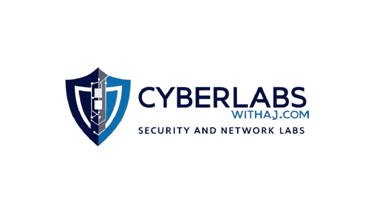Zero Trust Architecture: Why Traditional Firewalls Are Not Enough in 2025
Traditional firewalls are no longer enough to protect today’s networks. Learn why Zero Trust Architecture is essential in 2025 and how it strengthens modern cybersecurity strategies.
BOLGS


🌐 Introduction: The Firewall Era is Over
In the past, organizations relied on firewalls to act as digital gates — once you were “inside,” you were trusted. But in 2025, this castle-and-moat approach has become dangerously outdated.
With cloud environments, remote workers, BYOD devices, and increasing cyber threats, the network perimeter is blurred. That’s why businesses are shifting toward Zero Trust Architecture (ZTA) — where no one is trusted by default, not even internal users.
🔍 What is Zero Trust Architecture?
Zero Trust is a security model based on the principle of:
“Never Trust, Always Verify.”
Instead of granting access based on location or role alone, Zero Trust authenticates and authorizes every request — regardless of where it comes from.
🧱 Why Traditional Firewalls Fall Short in 2025
LimitationImpact🧭 Static PerimeterCan’t secure dynamic cloud/mobile users🔓 Implicit TrustLateral movement becomes easy after initial access📦 Lack of VisibilityCan’t monitor internal east-west traffic❌ No User ContextNo awareness of user identity or device health⚠️ Incompatible with Remote WorkVPNs + firewalls = slow & risky for hybrid models
Firewalls are still useful, but they are no longer enough — you need context-aware, identity-driven security layered across your network.
🔐 Core Principles of Zero Trust
Verify Explicitly: Authenticate users using MFA, device posture, and risk signals
Use Least Privilege Access: Only grant minimum necessary access — nothing more
Assume Breach: Treat every user or device as potentially compromised
Micro-Segmentation: Divide the network into secure zones to reduce lateral movement
Continuous Monitoring: Inspect all traffic, log every action, monitor in real time
⚙️ How Zero Trust Works in Real Environments
✅ Example Scenario:
An employee logs in from a personal laptop using hotel Wi-Fi
Zero Trust system checks:
✅ Identity (MFA)
✅ Device compliance (Antivirus, OS patch level)
✅ Geo-location risk
If anything looks risky, access is denied or restricted
Even if allowed, user is only granted access to specific apps or data
🧰 Top Tools for Implementing Zero Trust
🔹 Microsoft Entra ID (formerly Azure AD)
🔹 Zscaler Zero Trust Exchange
🔹 Cisco Duo / Umbrella
🔹 Okta Identity Cloud
🔹 Google BeyondCorp Enterprise
🔹 Palo Alto Prisma Access
These tools offer identity-aware access, policy enforcement, and end-to-end visibility.
🏢 Industries Leading Zero Trust Adoption
🏥 Healthcare – Protecting patient data & remote access
🏦 Finance – High compliance + strong identity management
🏢 Enterprise IT – Managing hybrid workforces & cloud apps
🎓 Education – Securing online portals & student data
📈 Benefits of Zero Trust Architecture
✅ Stronger protection against insider threats
✅ Limits attack surface even after a breach
✅ Seamless integration with modern cloud services
✅ Better visibility and control over user activity
✅ Compliance with frameworks like NIST, ISO 27001, and CMMC
🚧 Challenges in Adopting Zero Trust
🔧 Complexity in initial setup
🧩 Integrating with legacy systems
🎓 User resistance to change (e.g., MFA adoption)
💰 Cost of identity and access tools
But these challenges are manageable — and the long-term security gains are worth it.
✅ Conclusion: Zero Trust is Not a Product — It’s a Strategy
Traditional firewalls are no longer enough in the age of cloud, remote work, and sophisticated attackers. Zero Trust Architecture isn’t just a buzzword — it’s the future of cyber defense.
By verifying identity, enforcing least privilege, and assuming breach, organizations can build a resilient, flexible, and modern security posture that fits the demands of 2025 and beyond.
